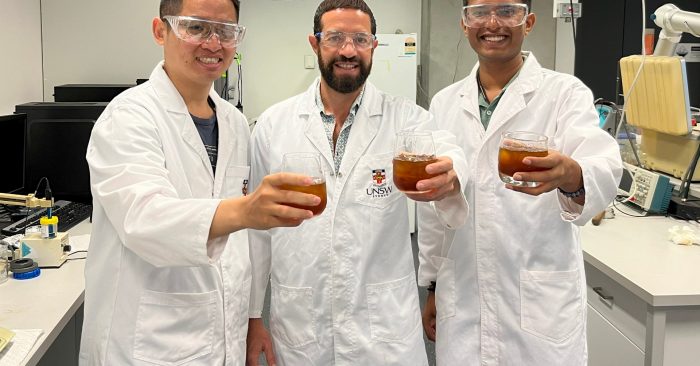
Same taste in less time
Collaborating with researchers from University of Queensland, samples of coffee were sent to the Queensland Alliance for Agriculture and Food (QAAFI) where they underwent a thorough sensory analysis.
The samples included cold brew sonicated at room temperature for one minute, the second was sonicated for 3 minutes, and the third was a regular 24 hours stepped brew at four degrees Celsius without sonication.
They were evaluated on their aroma, texture, flavour, and aftertaste attributes.
“Compared to the 24-hour brew, the sonicated one-minute brew sample received similar ratings, especially in flavour, aftertaste attributes including bitterness, sourness, fullness texture and aroma,” says Dr. Trujillo.
“However, it scored lower in aroma intensity and dark chocolate aroma. This suggests that the sonicated 1-minute sample is slightly under-extracted compared to the 24-hour cold brew.
“Meanwhile, the sonicated three-minute sample provided a similar dark chocolate aroma and aroma intensity to the 24-hour cold brew, but slightly more bitter.
“The results of the sensory study showed that a sonication time between one and three minutes is ideal for creating a coffee comparable with 24-hour cold brew coffee, depending on the interest of customers.”
University of Queensland Sensory Scientist and Flavour Chemist Professor Heather Smyth, a co-author of the paper, said the new method created a coffee as good as cold brew steeped overnight.
“Our trained sensory panel tastings proved that we can get a very similar taste profile to either a traditional cold brew or an espresso in the time it takes to brew a hot espresso,” Prof. Smyth said.
“Further work could explore different types of beans, different regions of beans and for companies or cafes that specialise in single origin or high-quality beans, this would be another string to the bow to show yet another dimension of coffee.
“Once again, Australia has new technology at our fingertips that moves on from traditional methods to modern methods of coffee making to give consumers a new premium experience.”
Ultrasounds can be applied to several areas across the food industry including drying, extraction, emulsification and crystallisation – making the process faster and more efficient.
Dr. Trujillo says this technology can be also used to speed up the brewing process of teas as well.
“With this technology, we’re offering coffee shops, restaurants and even home coffee-brewers the chance to produce on-demand brews, eliminating the need for large brewing and refrigeration units.”
https://bxt.org/dbbik